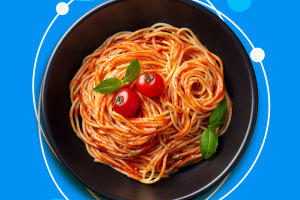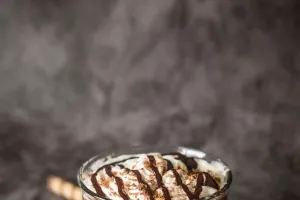One day in the 1850s, in the Bay of Bices, France, a fierce wind ran a British sailing ship aground and the crew survived to a deserted island.
When the wind stopped, the men returned to the ship in search of food, but the flour, sugar, and cream on board were all soaked in water, so they took the soaked batter back to the island and formed it into small balls, which they baked and ate.
The baked dough was fluffy, crispy, and tasty. To commemorate the escape, the crew returned to England and baked the biscuits in the same way, naming them after the bay 'Beith Bay'. This is how the biscuits came to be.
The supermarket shelves are full of different types of biscuits, are you wondering what the differences are in their ingredients and production methods? How did biscuits and wafers get their names?
Soda Biscuits
Soda biscuits are mainly made from wheat flour, baking soda, vegetable oil, and yeast. The yeast is added to a portion of the wheat flour, which is then mixed into the dough and allowed to ferment slowly before the rest of the wheat flour is added and fermented for a short time.
Soda biscuits are often recommended for people with stomach problems because of the addition of alkaline baking soda, which neutralizes stomach acid and is better digested through the fermentation process, although this is not very relevant in practice.
Cookies
Commonly, Cookies are made from low-gluten flour with sugar, eggs, butter, salt, and milk powder. Usually, the sugar is added to the softened butter first, then it starts to whip and continues to whip by adding the egg several times, before adding the low-gluten flour and milk powder.
Cookies are dense, sweet, and flavourful because they are high in sugar and fat, for example, one of my favorites is 63% carbohydrate, 25% fat and up to 500 kcal per 100g, almost as much as a burger.
Wafer biscuits
These biscuits are mainly made from glutinous rice flour and starch, with emulsifiers and bulking agents added as auxiliary ingredients, requiring a high level of skill in production.
Wafer biscuits are low in density and have a loose structure, so they taste crispy and crunchy and do not feel full if you eat too much.
The flavor and texture of the biscuits are enriched by the addition of fillings, which often attract people to eat them one by one. A special reminder that some wafers are 'chocolate-flavored' and may be covered in cocoa butter.
Wholemeal biscuits
As the name suggests, these biscuits are characterized by the use of wholemeal flour and are easy to make, requiring only the usual fermentation and baking processes. Wholemeal biscuits are rich in fiber and filling, but relatively poor in taste.


